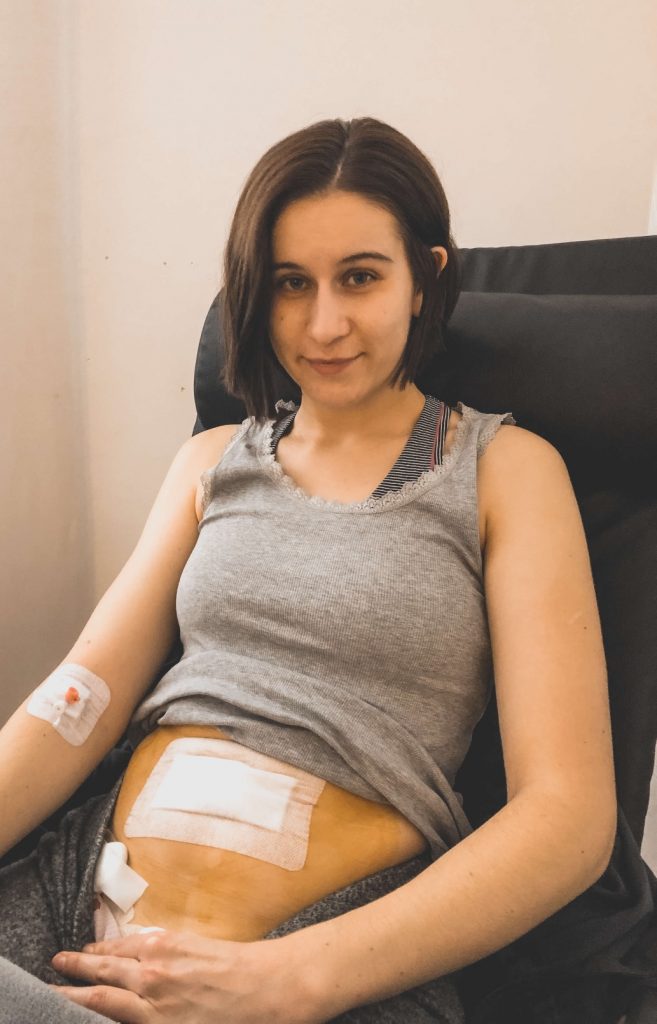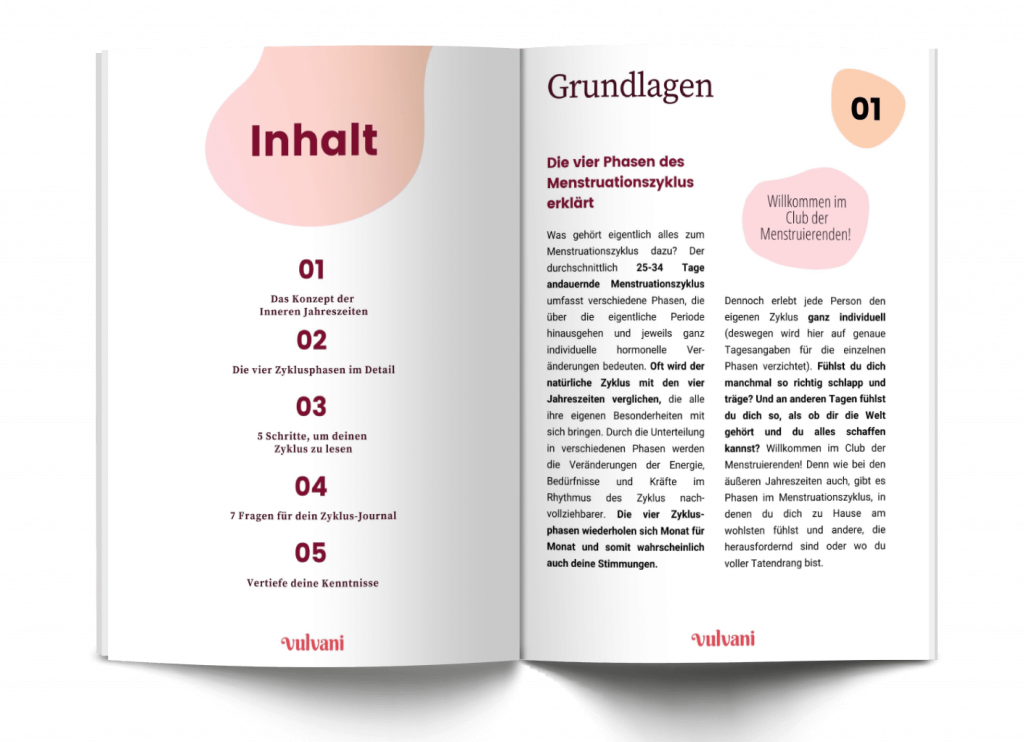
Discovering your menstruation as a spiritual practice
Yasmine understands her menstruation as a spiritual practice and shares in this interview how she is connecting more with her own body through cycle awareness.
Endometriosis is a chronic, often very painful and difficult to treat disease of people with an uterus. Even though 1 in 10 menstruating people are affected by endometriosis, the disease is unknown to many. But Lea is the one! That is why she has made it her passion project to do the often missing educational work in this field and today she tells us about the journey of her disease, the diagnosis and the treatment options for endometriosis. Lea lives together with her boyfriend Philip in Hannover and is 25 years old. She has been suffering from endometriosis and adenomyosis for almost five years. However, she received her diagnosis of endometriosis only a few months ago. For a long time she simply thought that what she was experiencing was quite normal. But it is not! Thank you dear Lea for sharing your story so openly in our interview and showing us what lies behind the term endometriosis!

It all started with my momentous decision to stop taking the birth control pill in 2015. I’ve been on the pill since I was 15, so I’ve been on it for many years. But I always had problems with it – especially with anemia, because I had unbelievably heavy bleeding over the years. So I stopped taking the pill in 2015, when I was 20, and had inserted a three-year hormone IUD, the Jaydess. And that’s when the trouble started…
The fact that the extent of my pain was not even close to normal did not occur to me for many years.
The first period with Jaydess was a real pain nightmare – and I didn’t even realize the first time that this pain was related to my period. It got to the point where Philip would have preferred to drive me to the hospital if the roads hadn’t been completely icy. But as quickly as the pain came, it disappeared again. I went to my family doctor anyway – but he couldn’t help me. On my next period the same thing happened again. Then it started to click: I seem to be suffering from menstrual pain now. I thought it was just because of the other hormones and I would have to live with it. But the fact that the extent of my pain was not even close to normal did not occur to me for many years.
Three years later, during which I simply lived with it somehow, I had a new hormone IUD inserted – this time for five years. At the obligatory check-up three months later, a cyst was discovered in my right ovary. The first thing they told me was not to worry about it and that it would probably just disappear on its own. At the next check-up three months later, it was still there and three months later it was still there.
Endometriosis what? I had no idea what she meant by that or what it was.
At this point, my gynaecologist expressed the possibility that this could be an endometriosis cyst. Endometriosis what? I had no idea what she meant by that or what it was. So after I gave her a blank stare, she explained to me what endometriosis is and how it shows itself. For the first time I thought that my severe pain might not be so normal after all. So I told her about it and that reinforced my gynaecologist’s assumption. Endometriosis can only be diagnosed with the help of a laparoscopy, she explained to me – but she did not immediately advise me to have surgery. First she gave me a brochure and encouraged me to dive into the subject a little and then come back in three months for another check-up.
Said and done. At home I read about the subject with my boyfriend Philip, who is an incredible support in all of this, and thought about whether I would want to undergo surgery. At that time the pain was only extreme during my period and otherwise I had fewer problems. However, somehow I just wanted to know what was going on with my body, so I considered the operation more and more, but wanted to wait for the next appointment.
However, just a few weeks after the last appointment my pain gets worse and worse quickly until it is there every day. So I return to my gynaecologist again well before the next check-up appointment, I couldn’t stand it any longer. It turns out that my cyst has grown considerably and meanwhile expanding my ovary a lot. She now also recommends me to have undergo surgery to remove the cyst, to have the diagnosis and to possible remover further endometriosis lesions directly.
I receive my transferal letter for the surgery from her and a recommendation for an outpatient clinic – it is now August 2019. Many weeks will pass before the preliminary consultation for the surgery, which will not take place until September. Then again many weeks later, in November 2019, I have my appointment for the endometriosis surgery. During this surgery I will be diagnosed with endometriosis and also adenomyosis, which unfortunately is inoperable. In addition to the cyst, which was actually an endometriosis cyst, I had more endometriosis lensions in my abdomen. Fortunately all of them could be removed. Unfortunately, however, the cyst could only be partially removed, because otherwise my ovary would have been damaged.


Before I had my endometriosis cyst, my main symptom was contraction-like pain just before and during my period. Because of the pain, cold sweat, circulatory problems and nausea up to vomiting from pain often followed. There were, however, various other symptoms with which I struggled and still struggle. This includes things like severe tension especially in the (lower) back due to poor posture caused by the pain, exhaustion, fatigue, sleep disorders, mood swings, muscle pain and so on – the list is long. Whether all of this originates directly from endometriosis? Of course I cannot say that for sure. Maybe it has something to do with the hormones or with the fact that my body is simply fighting against something permanently.
Since my surgery was less than a year ago, I have not yet tried much. After my surgery I was first prescribed the Visanne, a progestin birth control pill. At first I was sceptical and not a fan of it, as there were good reasons why I had stopped taking the pill. I actually didn’t want to start again. But on the other hand, there was the option that my ovary would be destroyed by the endometriosis, if I did not take action after the surgery. So I decided to take hormones and I’m still taking them.
To be honest, however, I am not quite convinced of this at the moment, as my endometriosis cyst was already back only a few weeks after the surgery. So right now I have to schedule a check-up every three months to see what happens to it. But I still hope that my hormones will take a little longer to kick in and that the cyst will get smaller in the long run and perhaps even disappear completely. However, sometimes I find it hard to believe this – I honestly have to admit that.
I honestly have to say that I am incredibly lucky with my doctor. That someone suspects endometriosis from a cyst is, I think, rather rare. I always hear stories that people with endometriosis are not taken seriously at all – but with me it was completely different! Whenever I have something that seems strange to me, I can come in for a medical consultation immediately, even though they are always fully booked. I am never dismissed, even if I am sometimes unsure myself, I am always taken seriously. So far, I have not had any bad experiences with other doctors regarding endometriosis, but I am really lucky that I am always taken seriously!

If you have other questions about endometriosis or would like to learn more about the disease and living with endometriosis, I can highly recommend Lea’s blog, Instagram and YouTube channel! And if you are suffering from endometriosis yourself, feel free to tell us about your personal experiences or your stroy about the diagnosis of endometriosis in the comments.



Yasmine understands her menstruation as a spiritual practice and shares in this interview how she is connecting more with her own body through cycle awareness.

What options are there for male birth control? Ailsa delivers an overview of what is available now, and what may come in the future.

Sustainable underwear? The founders of TUKEA talk about fair labour conditions, body diversity and body literacy.
…and empower countless women to make empowered choices about their bodies!

